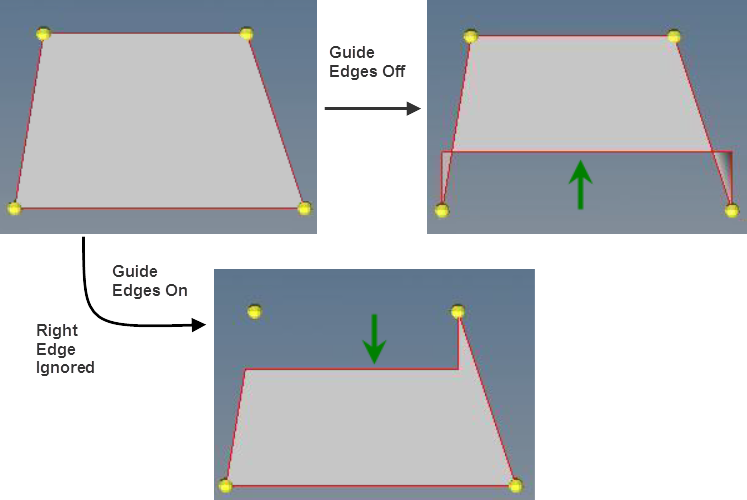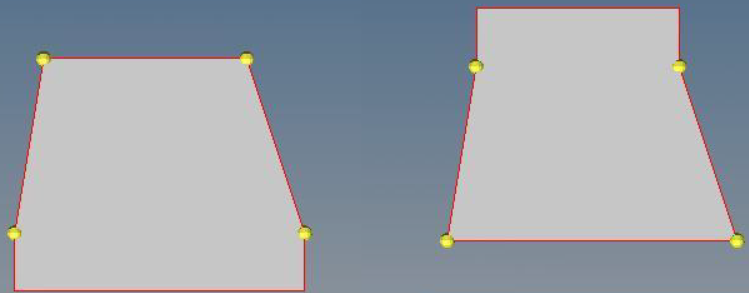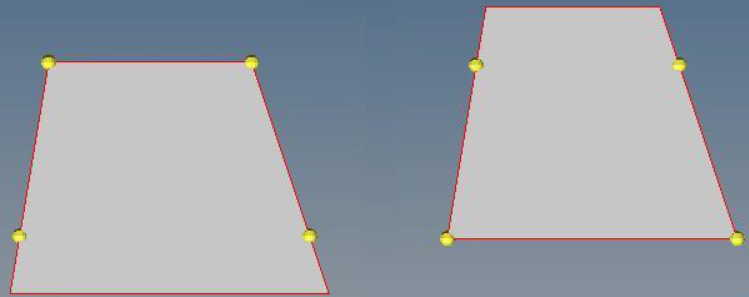Extend Surfaces Subpanel
Use the Extend Surfaces subpanel to access several controls that affect how surfaces are identified and generated.
Panel Options
| Option | Action |
|---|---|
| min. angle between surfaces | Surfaces whose angle relative to one another is less than this value will not be extended toward each other. |
| max edge to surface angle | Edges that you wish to extend must not be too drastically angled relative to the target surfaces. Edges angled greater than this number of degrees relative to their target surfaces will fail to extend. |
| allow shortening | Shorten surfaces rather than extend if they are extended less than the max extension distance beyond another input surface edge. |
| allow inter-comp extension | Extend surfaces toward surfaces that exist in a different component. When disabled, you can only extend surfaces to other surfaces within the same component. |
| use guide edges | Edge extensions
without this option are straightforward, with edges extending
along their normal. With this option, the extension uses the
edges adjacent to each extending edge as an indicator to trim
the extended surface and maintain a similar shape for the
surface. In addition, when using the extend over edges method
instead of the max extension method, a new lines: guide edges to
ignore selector allows you to select adjacent edges to omit from
consideration as guides. Figure 1. Extended Trapezoidal Surfaces is an example where the use of guide edges are a necessity to avoid undesirable results. |
| create new surfaces for extension | Instead of extending
the existing surface, a new surface is created to fill the gap
between the original surface and the target of the extension.
The original surface is left unchanged. When this checkbox is
selected, additional sub-options are enabled.
|
| create in: | Choose where to
organize component extensions.
|
Extended Trapezoidal Surfaces

Figure 2.
Using the use guide edges option allows the guide edges themselves to be shortened, thus avoiding this issue.

Figure 3. Guide Edges Off, Elongation

Figure 4. Guide Edges On, Elongation

Figure 5. Guide Edges Off, Shortening

Figure 6. Guide Edges On, Shortening